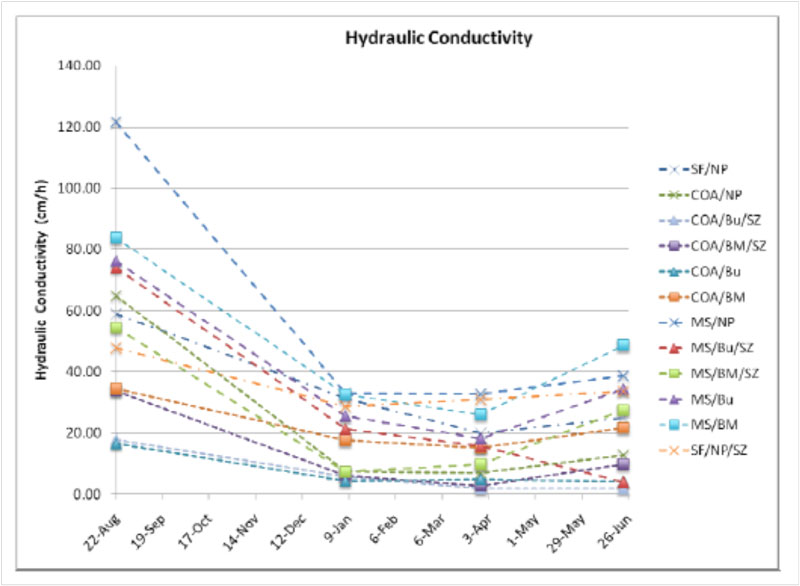[vc_row][vc_column][vc_column_text]The short and long term performance of engineered media specified for use in biofiltration systems is something that must be taken into account when utilizing bioretention as the primary solution for stormwater management and stormwater quality. Many times only the short term infiltration rates of a biofiltration media are considered as instead of what actually takes place over time. Another common mistake is to assume that results attained with one batch of the biofiltration media will be the same results with the next batch using identical specifications. Although biofiltration medias are “man-made” they are still a natural system that are always evolving. Plant type, the biological health of the system, the weather patterns for a given time period, and many other variables create this discrepancy among the different batches of biofiltration media.
Our job is to best predict the unpredictable so that the stormwater solution that we design is effective regardless of the circumstances. To do this, we have to look at the data available. In August 2010 Dr. Michael Barrett with the Center for Research in Water Resources at the University of Texas in Austin co-authored a paper called “Performance Comparison of Stormwater Biofiltration Design”. Although the entire study is very valuable, for the purpose of this article, we will look at the performance characteristics as it relates to hydraulic conductivity, or the flow rate through the biofiltration media in a saturated state. As you can see in the graph below, the team at the University of Texas created twelve samples, five using the City of Austin’s (COA) Specification, five using a media from the Facilities for Advancing Water Bioretention (MS) out of Australia, and two using sand only (SF).

The two biofiltration medias were planted with five different plant types and one sand filter was planted while the second was left unplanted as a base line. Although there is a lot to gain as it relates to plant selection with this study, the thing of most importance is to see the variations of the flow rate through the biofiltration media from day one through month ten. In all ten biofiltration media examples, we see a roughly 50% (from 20”hr to 10” hr) decrease in flow rate through the biofiltration media within the first five months with a 70% (from 48”hr to 14”hr) decrease in flow rate through the sand in the same time period. What we can learn is that virgin media has much more open capillary space than media that has been compacted over time by rainfall. Over the next four months, the decline levels off, and in many cases begin to rebound by the end of the study. This is attributed to the emergence of a complex root system beginning to grow within the biofiltration media and re-opening the capillary space that was closed off due to compaction. Other Studies show that this is improvement in infiltration rate continues over time.
As designers, this teaches us one very important lesson; when you specify a biofiltration media for your overall stormwater solution, you can expect the performance to be 2-3 times less than what you specify. Use a Safety Factor of at least 2 to ensure short term and long term success. To read Dr. Barrett’s study, go to http://www.crwr.utexas.edu/reports/pdf/2010/rpt10-05.pdf.[/vc_column_text][/vc_column][/vc_row]
